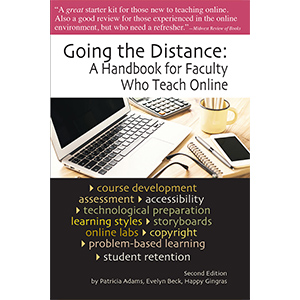Five Easy Ways to Integrate Active Learning into Your Classroom

Several studies indicate the importance of encouraging students in the learning process. They further reveal that it makes them more attentive and focused, helps students exercise higher-level thinking skills and nurtures important learning experiences. While good discussions are known to be a handy tool for promoting active learning, let’s see what active learning is all about.
Encouraging student involvement through active learning—Active learning simply means requiring students to take part in classroom learning, as opposed to just being passive listeners (and you being “the sage on the stage”). Students learn more if they are provided with opportunities to participate actively in the learning process, whether it is group discussion, flipped assignments, in-class practice or application.
Strategies to promote active learning include (but are not limited to) stressing the need for development of student skills that require them to use higher order thinking skills (HOTS). Those skills include:
- Analysis, evaluation, and creation (the “top end” of Bloom’s Taxonomy)
- Logical reasoning
- Judgment and critical thinking
- Problem solving
- Creativity and creative thinking
There can be a wide range of activities ranging from very common activities (such as including questions in the lecture to get clarity through discussion with fellow students and extemporaneous writing assignments), to more intricate activities (such as factual learning experiences, and using case histories to teach the principles of decision-making).
Here are some of the more well-known activities that encourage active learning in the classroom.
Flipped Classroom Approach—It is an instructional or a pedagogical (educational) teaching platform in which the traditional learning environment is reversed by providing instructional content or learning material outside of the classroom.
The aim of this approach is to provide deeper knowledge to students through –
- Peer instruction (PI) and peer-group discussion—As per the developer of PI, Eric Mazur, the gist of PI is to teach by questioning rather than telling. So, whether you integrate study groups, presentations or short breakout teaching sessions, instructors should focus on moving the simple jobs of giving instructions or course material that requires rote memorization out of the classroom.
- Peer-group discussion involves short breaks during a lecture during which students work on better understanding of material and retention of knowledge while sharpening their communication skills and interactions with their classmates (one of the important so-called “soft” skills) employers want from their college graduate new hires.
- Collaborative learning—It develops higher-level thinking, better communication, and leadership qualities in students. It further promotes student-teacher interaction, improved student-retention, inculcates responsibility and exposes students to real-life situations.
- Case-based teaching and problem-based learning—Case-based teaching helps in the development of analytical thinking skills through the discussion of real-life situations.
- Problem-based learning (PBL) comprises well-designed challenges to help students hone their problem-solving strategies. PBL improves teamwork and leads to deeper disciplinary knowledge.
Discussion and Debate—This is another active learning technique that nurtures critical thinking and logical apprehension skills among students. However, you need to plan well in advance and define goals for all discussions.
- Planning—Planning is important before debate. You must have clarity about the discussion and should know what you actually want your students to learn from such discussion. Make sure to inform students about the aim of the discussion and provide them with study questions to involve them to respond in discussion.
- Chalking out key questions—Chalk out key questions that you wish to ask during the discussion and the learning aims of the discussion for your students.
- Designing group interaction—Your questions should be directed to the whole class and not just to one or two students. Give students ample time to think about the answers to encourage learning.
Decision-making activities—Decision-making activities enable students to think about a complicated problem and chalk out possible and creative solutions. By integrating this technique, by working in groups students can be asked to think about any kind of problem and work out solutions while providing the logical reasoning behind their answers.
Demonstrations—Yet another powerful active learning strategy is the use of demonstrations. Students give a prediction about the demonstration’s outcome by having a discussion with their classmates. Once the demonstration is over, you can invite students to have a discussion about the observed outcome and how it could be different from the predicted result. This strategy is helpful in testing the knowledge of a system by predicting the result and also enables to redesign their mental representation (in case of a wrong prediction). Using Technology for Teaching—Using technology to teach students can help sharpen their learning skills by giving them deeper understanding. However, it is important to choose the most appropriate technology tools and to integrate them keeping lesson and course goals in mind in order to enhance learning. These days, there are a plethora of online tools and technologies available to make a better process, be it smartphones (for a quick assessment of student-understanding to adjust instructors’ instructional speed), apps (for online sharing of documents), tablets (to link projects and computers to enable better student-instructor communication), presentation software (such as Prezi and PowerPoint to help instructors enclose high-resolution sound files, diagrams, videos or images to increase both text and audio lecture content), clickers (to survey students during a class to assess their understanding) and lecture-capture tools (for recording lectures from their computer to enable students to review these at their own pace).








